Kursk legacy: Will there ever be another massive tank battle?
- Published
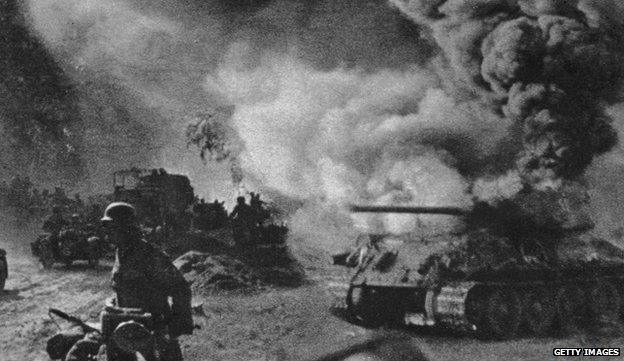
It's 70 years since Kursk, the largest tank battle in history. Will there ever be another battle involving thousands of tanks on each side or has armoured warfare had its day?
Before dawn on 5 July 1943 explosions lit up the Russian sky and the earth shook to a huge bombardment. As the sun rose, waves of German panzers began rolling across fields of sunflowers and wheat. The greatest tank battle in history was underway.
The Battle of Kursk pitted almost 3,000 German tanks against more than double that quantity of Soviet heavy armour.
Hitler delayed the offensive - codenamed Operation Citadel - to wait for the arrival of the new Panther. It gave the Russians plenty of time to dig formidable defences and concentrate their own armoured units.
Antony Beevor, author of The Second World War, describes the battle as a "slogging match".
The German tanks were fewer in number but far superior in armour and firepower. Tigers and the "monster" Ferdinand tank destroyer went in first, attempting to blast their way through.
One SS tank commander destroyed 22 Soviet tanks in under an hour, Beevor says. But the Russians defended with "suicidal bravery", getting in close to throw mines under the caterpillar tracks.
After eight days the German attack had run out of steam. Stalin launched counteroffensives that over the following six weeks inflicted a crushing defeat on the Wehrmacht.
Kursk was a tipping point for the panzers, says Beevor. For the first time the Russian air force had "got its act together". Air power was emerging as a dominant factor, as became clear in Normandy the following year.
Allied air superiority meant that the German panzers had to hide in the forests during daylight hours. The tank, like the battleship, was suddenly a sitting duck without control of the skies.
But unlike the battleship, the tank remains a key part of most militaries. According to the International Institute for Strategic Studies there are 60,000 tanks in active service worldwide.
During the Cold War, thousands of tanks were based close to West and East Germany as a potential invading or defensive force for a battle on the north European plain. "There's no question tanks would have been one of the foremost instruments in an invasion or defence," says Michael Codner, director of military sciences at the Royal United Services Institute.
When the Soviets crushed the Hungarian uprising in 1956 they did so by sending hundreds of tanks into Budapest, external.

The Yom Kippur War in 1973, when Egypt and Syria attacked Israeli forces, involved over 3,000 tanks.
US and UK forces used them to liberate Kuwait in 1991 and invade Iraq in 2003. At the Battle of Fallujah, US Marines brought in extra armoured brigades to help in the street fighting.
But tank offensives are usually limited to flat areas like desert, plain or steppe. In the jungles of Vietnam and the mountains of Afghanistan, the helicopter has proved itself to be a far more useful weapon.
In the 1980s, the MoD commissioned a paper considering whether the UK should replace its tanks with helicopters, Codner recalls. In the end their use in supporting infantry in seizing territory was deemed too important.
But the British Army has deployed none of its Challenger tanks to Afghanistan.
The tank's importance is as much symbolic as tactical. It can be used for good or ill.
Faced by the 1989 student protest at Tiananmen Square the Chinese authorities deployed tanks. And Saddam Hussein used it as a "military status symbol", says Beevor. On the other hand, peacekeepers need tanks to face down bullies, he notes.
"In Bosnia things only changed when the tanks went in. That's when the Serbs backed off."
Nato has drastically cut its tank numbers since the end of the Cold War, says Christopher Foss, editor of Jane's Armoured Fighting Vehicles. Germany was host to 4,000 and Britain and France over 1,000 each at one time. Now they have cut back to a quarter or a third of those numbers. Earlier this year, the last US battle tanks left Europe, external.
"Tankies" say heavy armoured vehicles have been written off many times before, only to be contradicted by events. At the end of the Cold War it was difficult to see a need for British tanks. Yet a year later the 7th Armoured Brigade was charging through the desert to liberate Kuwait, notes Beevor.
In 2003, the Canadian government announced it was getting rid of its Leopard tanks, external. "We are losing a millstone that has hamstrung our thinking for years," Lt Gen Rick Hillier said. Yet the policy was later reversed and dozens of Leopard 2s have been acquired by the Canadian military.
The evolution of the tank
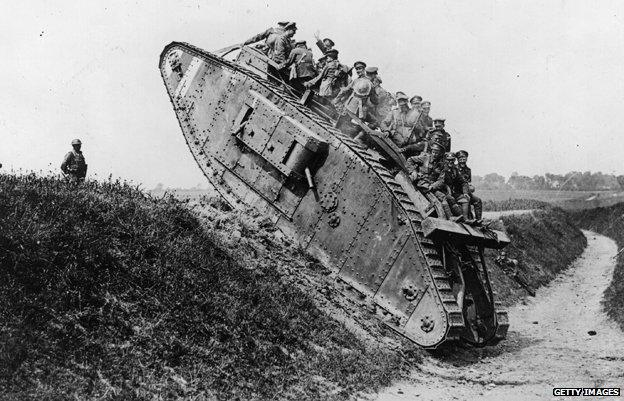
British troops riding on the back of the Mark IV tank in 1918
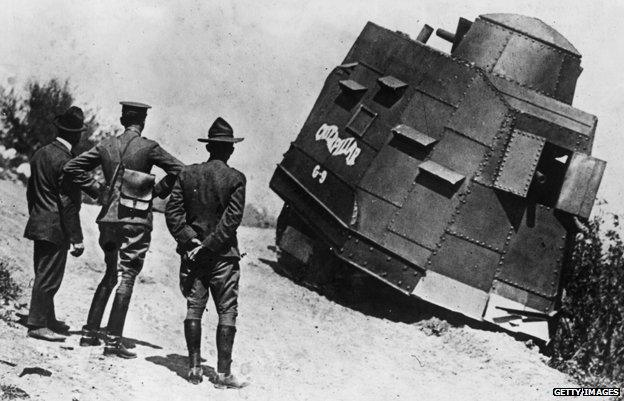
One of the early US tanks in 1918
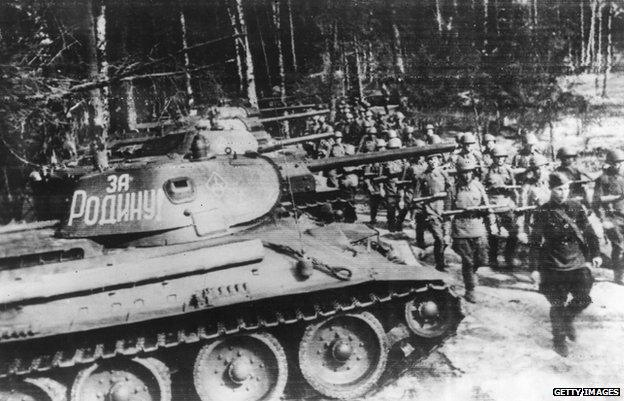
The Soviet T-34 medium tank first appeared on the battlefield in 1941
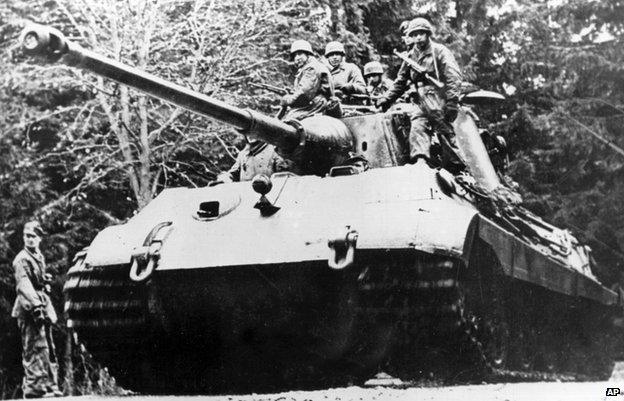
The German Tiger II tank was introduced to the battlefield in 1944
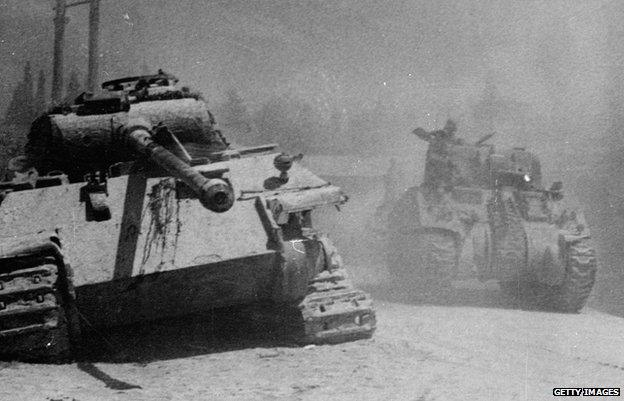
An abandoned German Panther tank (l) is passed by an Allied Sherman tank in Italy, 1944
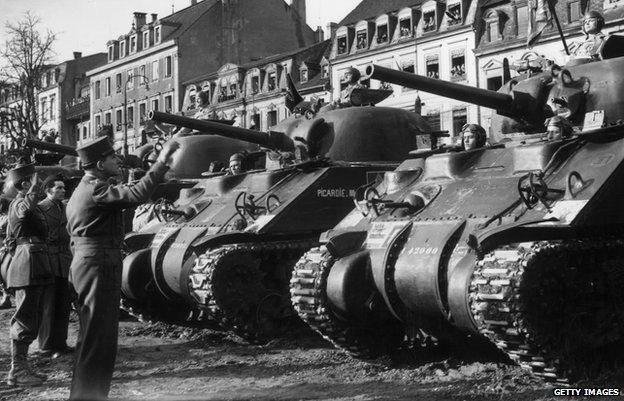
French General Lattre de Tassigny inspecting Allied Sherman tanks in Colmar, France, in 1945
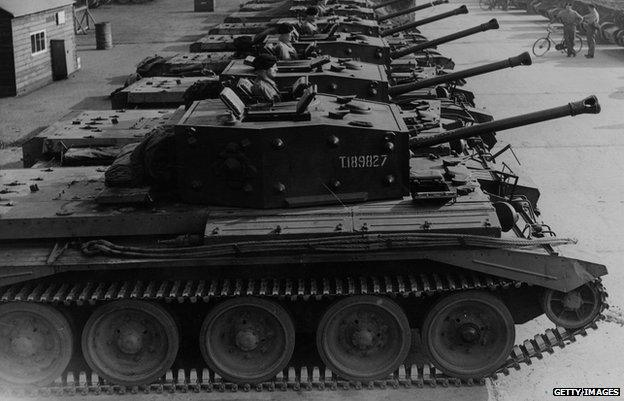
The British Cromwell tank first saw action in the Battle of Normandy in June 1944
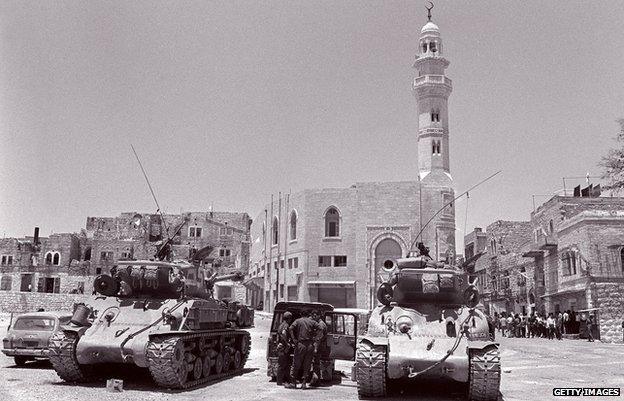
Two Israeli US-made Super Sherman tanks on patrol in 1967, just after the Six-Day War
.jpg)
Leopard 2 tanks were created in the early 1970s for the West German Army and later used in Afghanistan

The US army's M1 Abrams, seen here in Iraq, are highly mobile and designed for modern ground warfare
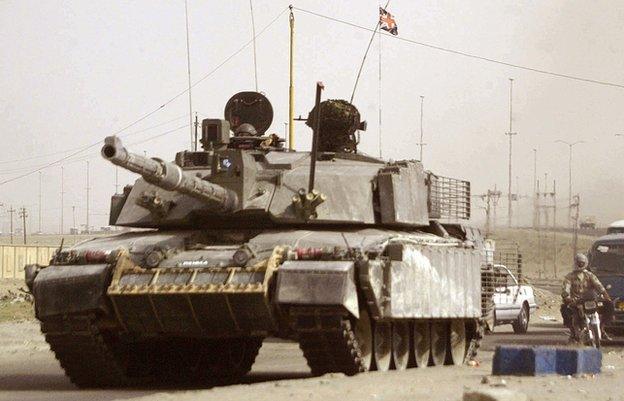
A British Challenger 2 tank driving down a road into Basra, Iraq, in 2006
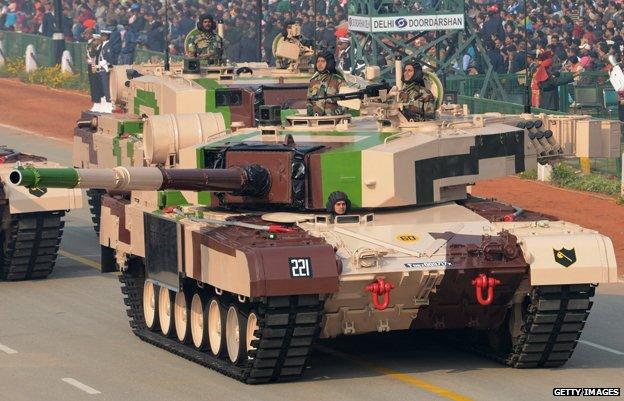
An Indian MBT Arjun MK-1 tank during rehearsals for the Indian Republic Day parade
Today the UK has 334 tanks.
A Ministry of Defence spokesman says the UK is still committed to heavy armour: "The 2010 Strategic Defence and Security Review (SDSR) recognised the need for an agile and capable force, which included the continued requirement for tanks to provide a unique capability." The UK's Challenger 2 tanks will be in service until roughly 2035, thanks to a "life extension programme", the spokesman adds.
Outside Europe tanks numbers are rising, Foss says. In the Middle East, Saudi Arabia is upgrading its US-made M1 tanks, Qatar has opted for the Leopard 2. China is replacing its tanks, South Korea is self sufficient, India and Pakistan have large numbers already. Asian countries without a tradition of tanks are building up their forces. Singapore and Indonesia have opted for the Leopard 2, while Malaysia has ordered Polish tanks.
Used properly - with infantry, engineers and close air support - they are still a crucial part of a military's capability, says former US tank officer Robert Forczyk, author of a forthcoming book about Kursk. "They provide the sharp point of the spear that can break through defences and advance rapidly to seize key objectives. Only airborne forces offer a similar versatility."
Day and night vision equipment gives modern tanks a big advantage over their WWII equivalents. A Tiger tank's powerful gun could finish off one of today's light armoured vehicles. But it would be impotent against a modern battle tank, says Foss. "The Challenger would open fire before the Tiger even knew it was there, and penetrate its armour."
But 70 years after Kursk, is a tank battle on that scale still possible?
Undoubtedly, says Forczyk. Various countries that have fought in the past have massive tank numbers.
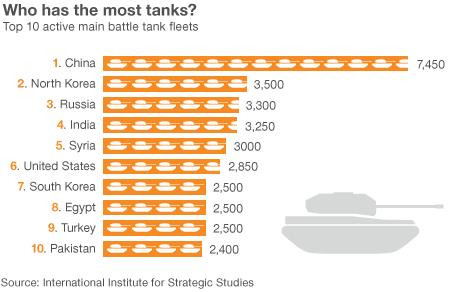
India has 3,250 and Pakistan 2,400. In the Middle East, Egypt has 2,500 and Syria 3,000, while Israel (500 in active service, 2000 stored) has regularly used tanks in recent conflicts.
It's possible to "wargame" purely hypothetical conflicts.
China has more than twice as many as any other nation at 7,450. Russia has 3,300. But the threat of a tank battle between North (3,500) and South Korea (2,500) is perhaps a more realistic possibility.
In the battles of the future, the tanks may be unrecognisable from the Russian T34 and German Tiger that did battle at Kursk. Military technology has reached the point where unmanned tanks - a land drone - are now possible, says Codner.
For traditional "tankies" it may be a different kind of beast altogether.
You can follow the Magazine on Twitter, external and on Facebook, external